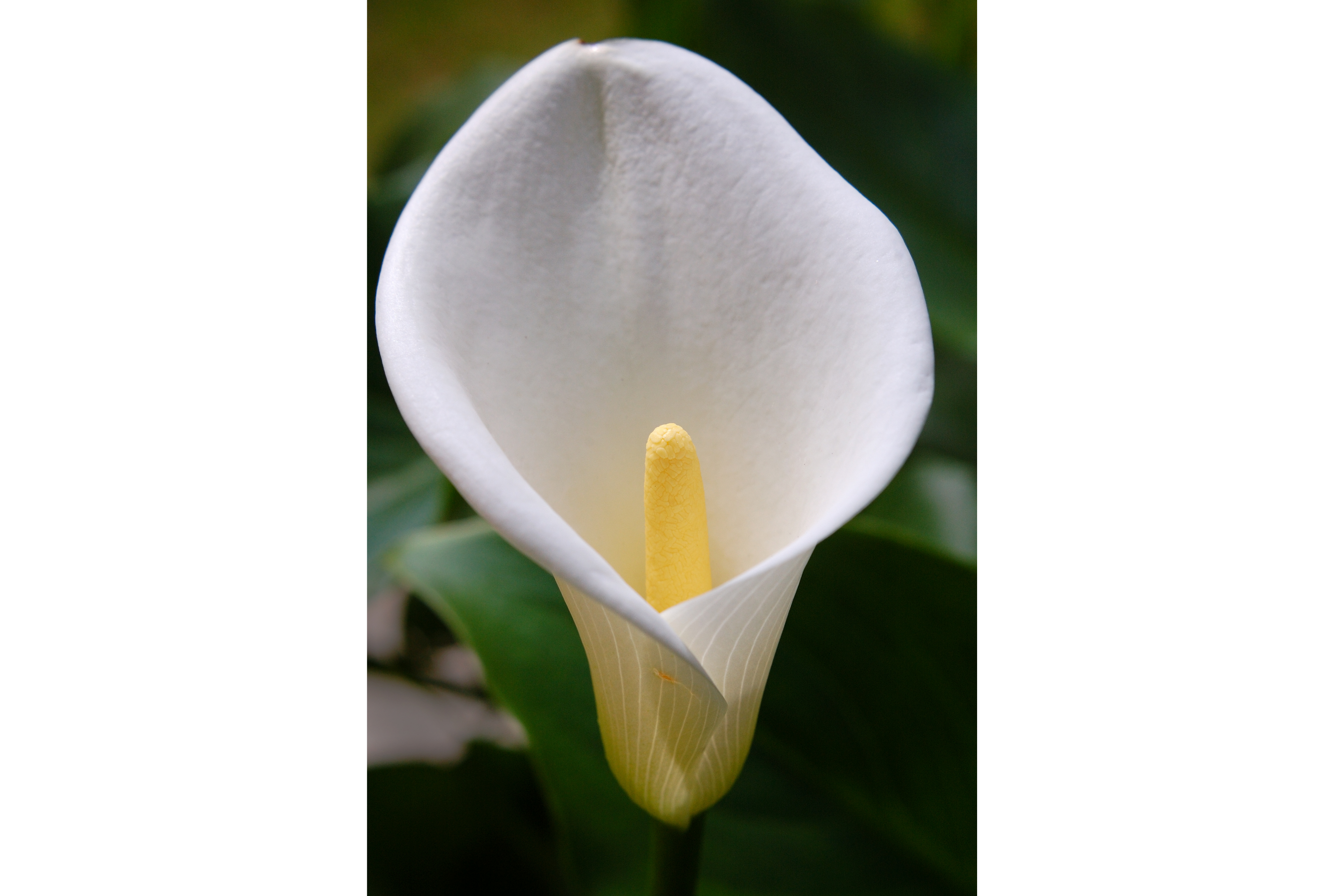Calla lily
(Zantedeschia aethiopica)

Description
Zantedeschia aethiopica, commonly known as calla lily and arum lily, is a species of flowering plant in the family Araceae, native to southern Africa in Lesotho, South Africa, and Eswatini. Zantedeschia aethiopica is a rhizomatous herbaceous perennial plant, evergreen where rainfall and temperatures are adequate, deciduous where there is a dry season. Its preferred habitat is in streams and ponds or on the banks. It grows to 0.6–1 m (2.0–3.3 ft) tall, with large clumps of broad, arrow shaped dark green leaves up to 45 cm (18 in) long. The inflorescences are large and are produced in spring, summer and autumn, with a pure white spathe up to 25 cm (9.8 in) and a yellow spadix up to 90 mm (3+1⁄2 in) long. The spadix produces a faint, sweet fragrance. Zantedeschia aethiopica contains calcium oxalate, and ingestion of the raw plant may cause a severe burning sensation and swelling of lips, tongue, and throat; stomach pain and diarrhea may occur. Z. aethiopica is native to southern Africa, specifically Lesotho, Mozambique, South Africa, and Swaziland. It has naturalised in Kenya, Madeira, Azores, Malawi, New Zealand, Tanzania, Zambia, coastal California and Australia, particularly in Western Australia, where it has been classified as a toxic weed and pest. The cultivar 'Green Goddess' is listed in the New Zealand National Pest Plant Accord, which proscribes its cultivation, sale, and distribution.
Taxonomic tree:







